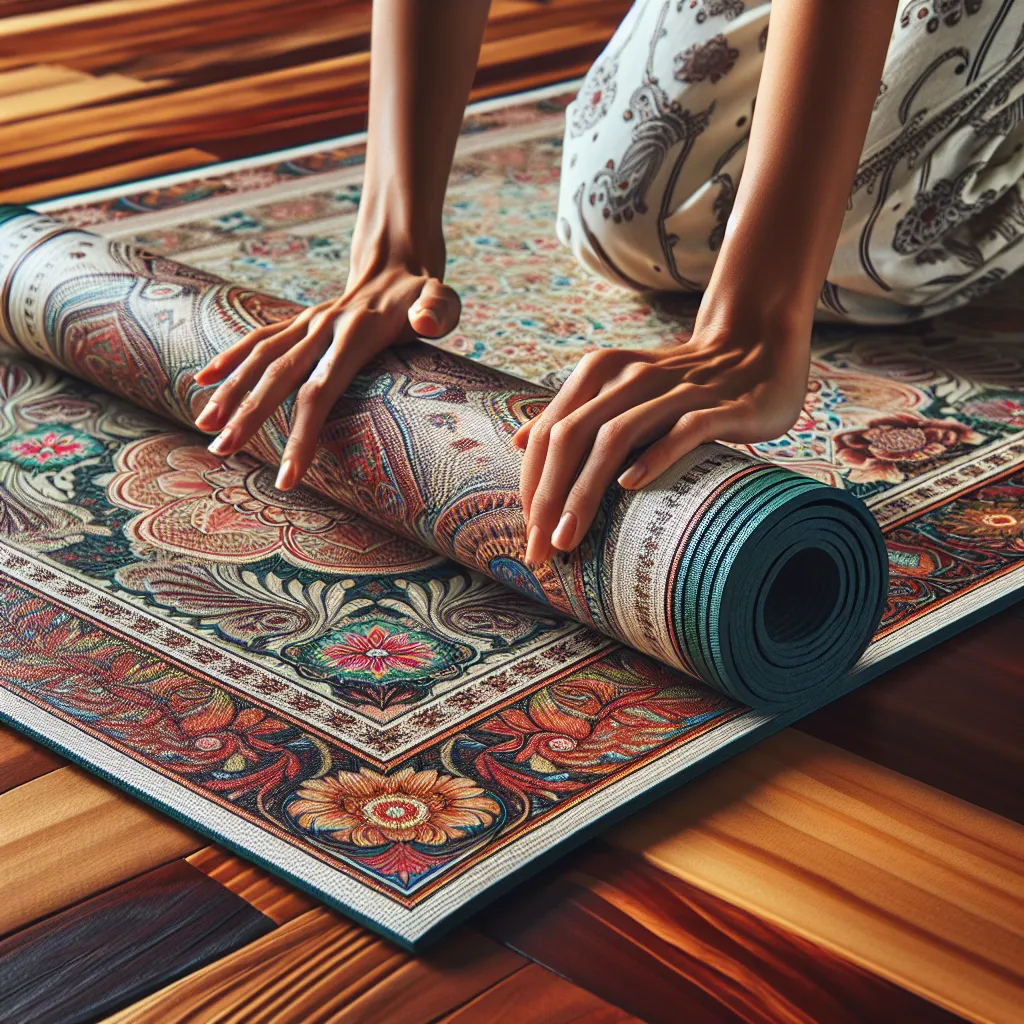
The Ultimate Guide to Yoga Mats: How to Choose the Perfect One for You
The Different Types of Yoga Mats Explained
When it comes to choosing the perfect yoga mat, it’s important to consider the different types available and how they align with your practice. Understanding the various options will help you make an informed decision that complements your yoga routine. The most common types of yoga mats include PVC mats, TPE mats, natural rubber mats, and jute mats.
PVC mats, made from polyvinyl chloride, are affordable and provide good grip and cushioning. However, they are not environmentally friendly and may contain harmful chemicals. On the other hand, TPE (thermoplastic elastomer) mats are a more eco-friendly option, being recyclable and biodegradable. These mats offer excellent cushioning and durability.
Natural rubber mats are a popular choice for their superior grip and eco-friendly composition. They are made from sustainable materials and provide excellent traction, making them suitable for hot yoga and dynamic practices. Jute mats, crafted from natural plant fibers, offer a textured surface for enhanced grip and are also biodegradable.
Each type of yoga mat has its own characteristics, and choosing the right one depends on your personal preferences, the type of yoga you practice, and any environmental considerations. By understanding the differences between these mats, you can select the one that best suits your needs and aligns with your values.
Factors to Consider When Choosing a Yoga Mat
When choosing the perfect yoga mat for your practice, there are several important factors to consider. The first consideration is the thickness of the mat. Thicker mats provide more cushioning and support for sensitive joints, making them ideal for restorative or gentle yoga practices. Thinner mats, on the other hand, offer greater stability and connection to the ground, making them suitable for more active styles of yoga such as Vinyasa or Ashtanga.
Another crucial factor to keep in mind is the material of the mat. PVC mats are durable and provide excellent grip, but they are not the most environmentally friendly option. Consider natural rubber mats for a more eco-conscious choice, although be aware that they may have a stronger rubber smell initially. Additionally, TPE mats offer a good compromise between grip, cushioning, and eco-friendliness.
The texture of the mat is also important. Some yogis prefer a smooth surface for easy movement, while others opt for a textured, non-slip surface to prevent hands and feet from sliding during their practice. It’s essential to choose a texture that aligns with your specific needs and preferences.
Lastly, consider the size and weight of the mat. Standard yoga mats are 24 inches wide and 68 inches long, but if you prefer more space for movement, a larger mat might be more suitable. Furthermore, if you’re a yogi on the go, a lightweight and easily portable mat would be a practical choice.
By taking into account these factors – thickness, material, texture, size, and weight – you can select the perfect yoga mat that caters to your individual practice and enhances your overall yoga experience.
Top 10 Yoga Mats for Different Yoga Practices
When it comes to yoga, having the right mat can make all the difference in your practice. With so many options available, it can be overwhelming to choose the perfect yoga mat for your needs. Whether you’re into hot yoga, restorative yoga, or power yoga, there’s a mat out there that’s perfect for you. To help you in your search, we’ve compiled a list of the top 10 yoga mats for different yoga practices.
1. Manduka PRO Yoga Mat
The Manduka PRO Yoga Mat is a top-of-the-line mat that provides excellent cushioning and support, making it ideal for any type of yoga practice.
2. Liforme Yoga Mat
The Liforme Yoga Mat is known for its alignment markers, making it perfect for those who focus on precision and proper alignment in their practice.
3. JadeYoga Harmony Mat
Made from natural rubber, the JadeYoga Harmony Mat offers great traction and is an excellent choice for hot yoga practitioners.
4. Gaiam Print Premium Yoga Mat
For those who value artistic designs, the Gaiam Print Premium Yoga Mat offers a wide range of colorful and unique prints while still providing a non-slip surface for various yoga practices.
5. Manduka eKO Superlite Travel Yoga Mat
Perfect for yogis on the go, this lightweight and foldable mat is ideal for travel and outdoor yoga sessions.
6. Yoloha Native Cork Yoga Mat
For eco-conscious yogis, the Yoloha Native Cork Yoga Mat is made from sustainable cork and provides excellent grip and cushioning.
7. Hugger Mugger Para Rubber Mat
The Hugger Mugger Para Rubber Mat is a durable and sturdy option, suitable for vigorous and energetic yoga practices like power yoga.
8. Yoga Design Lab Combo Mat
This mat combines a microfiber towel with a natural rubber base, making it perfect for hot and sweaty yoga sessions where a non-slip surface is essential.
9. PrAna E.C.O. Yoga Mat
Constructed from thermoplastic elastomer, the PrAna E.C.O. Yoga Mat is lightweight, environmentally friendly, and provides cushioning for a variety of yoga styles.
10. Hugger Mugger Bamboo Yoga Mat
For those seeking a natural alternative, the Hugger Mugger Bamboo Yoga Mat offers a sustainable option with great traction and durability.
With this top 10 list, you can find the perfect yoga mat to enhance your practice and help you achieve your yoga goals.
Maintenance and Care Tips for Your Yoga Mat
When you invest in a high-quality yoga mat, it’s important to take proper care of it to ensure its longevity and performance. Regular maintenance will not only extend the life of your yoga mat but also provide a clean and hygienic surface for your practice. Here are some essential maintenance and care tips for your yoga mat.
First and foremost, always refer to the manufacturer’s care instructions for your specific yoga mat. While most yoga mats can be cleaned with a simple solution of water and mild soap, some may require more specialized care. It’s important to follow these guidelines to avoid damaging the material or compromising the grip and cushioning.
After each practice, take a few moments to wipe down your yoga mat with a damp cloth or a yoga mat cleaner to remove sweat, oils, and any dirt or debris. This simple step will prevent the buildup of grime and bacteria, maintaining a fresh and odor-free surface.
For a deeper clean, you can hand wash your yoga mat in a bathtub or large sink using a gentle detergent. Avoid harsh chemicals or scrubbing vigorously, as this can deteriorate the material. After washing, ensure thorough rinsing to remove any soap residue, and then allow the mat to air dry completely before rolling it up for storage.
Proper storage is also crucial for preserving the quality of your yoga mat. Avoid leaving it exposed to direct sunlight or extreme temperatures for prolonged periods, as this can cause the material to degrade. Instead, store your yoga mat in a cool, dry place when not in use.
By implementing these maintenance and care tips, you can prolong the life of your yoga mat and maintain a clean and supportive surface for your yoga practice. Taking care of your yoga mat ensures that you can fully enjoy its benefits for years to come.



